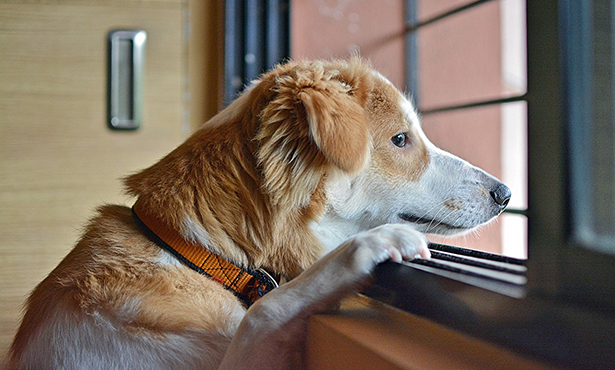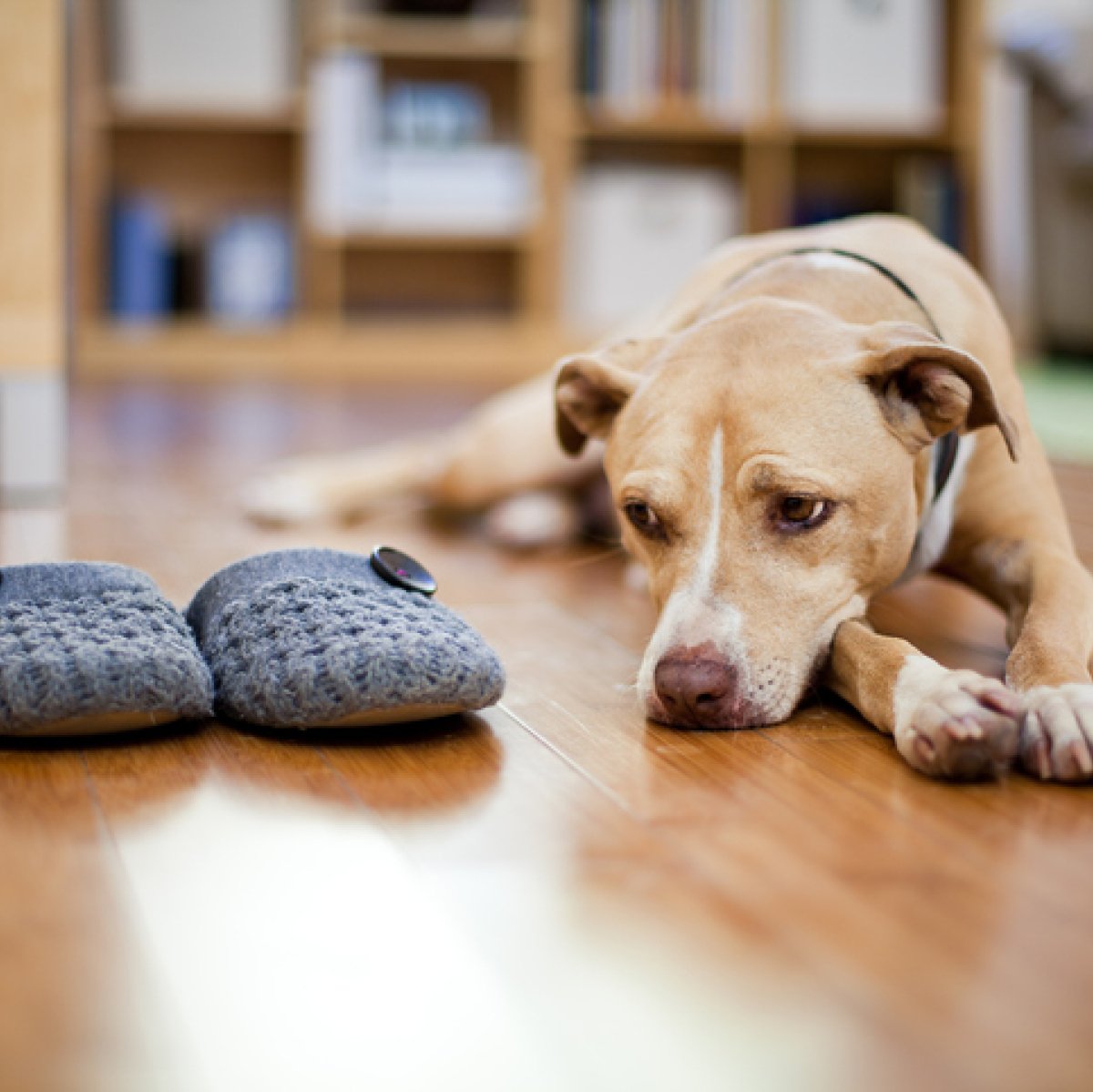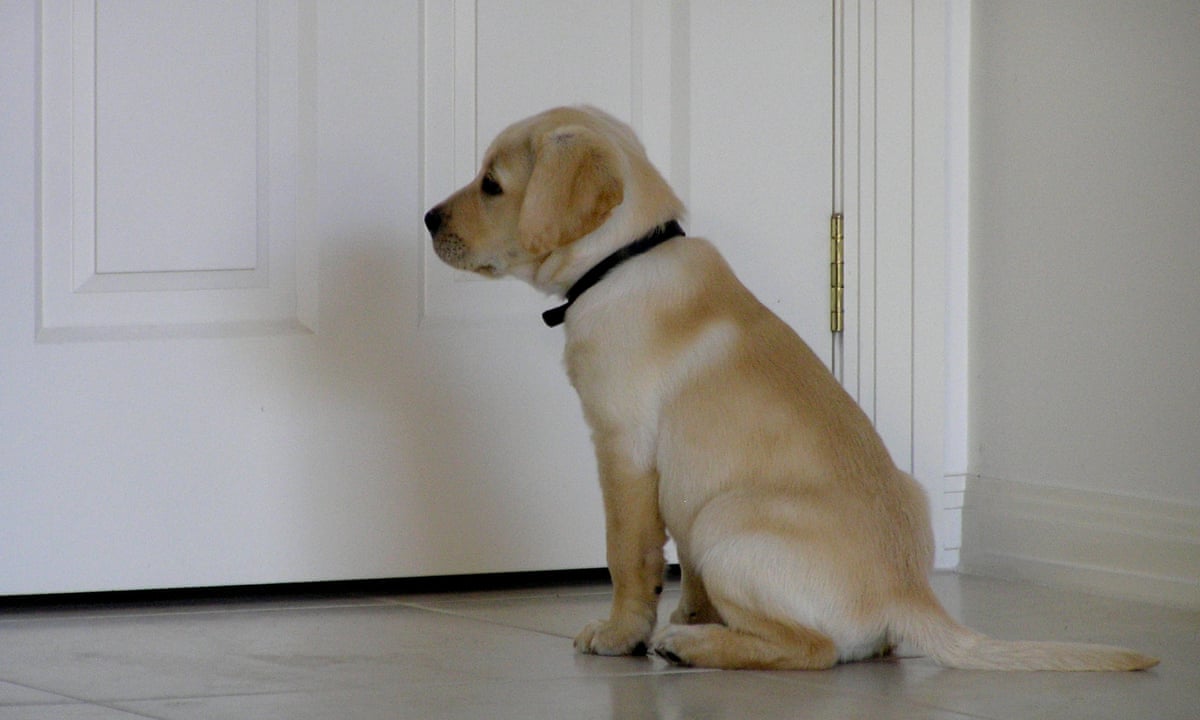Separation anxiety in dogs can appear in many forms: Does your dog get anxious when you grab your car keys? Has he peed or pooped in the house or scratched gouges in the door while you were away? Does your dog bark the entire time you’re gone?
Your dog may be experiencing separation anxiety. It can be annoying and worrisome, but dog separation anxiety can be treated, whether by your or a pet behavior expert. Learn more about this condition and what you can do to reduce your dog’s uneasiness.
Signs of Separation Anxiety in Dogs
Chris Pachel, DVM, DACVB, CABC, owner of the Animal Behavior Clinic in Portland, Ore., says many dogs experience some form of anxiety—apprehensive or anticipation of an unpleasant situation—when their owner leaves.
Clinical separation anxiety is different. It’s a serious condition that affects you and your dog’s daily lives. If your dog exhibits any of these behaviors (or a combination of them) when you leave, he could be experiencing separation anxiety.
Constant barking or howling
Destructive acts like chewing pillows or clawing windowsills
Peeing or pooping in the house
Excessive drooling or panting
Intense pacing
Attempts to get out of his crate
Dogs pay close attention to what you do, so you may notice a dog’s signs of stress beginning while you’re still at home. He recognizes the actions you take when you’re getting ready to leave. He knows he’s going to be left alone, so he may show his unease by whining, pacing, refusing to eat or drink, gluing himself to your side, or seeking your attention.
The important thing to remember is dog separation anxiety occurs when you’re away. Debra Horwitz, DVM, DACVB, a certified veterinary behaviorist in St. Louis, says your dog probably isn’t suffering from separation anxiety if he exhibits signs—going potty inside, scratching at doors or walls—while you’re both at home and out.
Fear of loud noises or a lack of house training can explain those behaviors, she says. But if they occur only when you’re gone, your dog may be trying to communicate his anxiety. Horwitz recommends recording your dog on video when you leave.
“You may see that 10 to 20 minutes after you depart, your dog starts pacing, panting, whining, and tearing up the door,” she says. “Dogs tearing up things for fun looks different than dogs tearing up things because they’re distressed.”

Why Do Some Dogs Develop Separation Anxiety?
According to Pachel, separation anxiety can occur for many reasons including genetics, developmental influences, poor socialization, or in response to bad experiences or traumatic events. The anxiety is then triggered when dogs are separated from a person they love or when the following situations come into play:
Change of ownership: When a dog is abandoned by the side of the road, surrendered to a shelter, or transferred to a new owner, he may end up developing separation anxiety.
Loss of a family member: The sudden absence of a favorite human—whether divorce, death, or college—in the home can trigger separation anxiety in a dog.
New schedule: A change in your work or volunteer schedule may alter the length of time your dog is alone at home. He may end up developing separation anxiety.
New home:. Moving to a different home with new smells and new sounds in a different neighborhood can cause a dog who is left alone to develop separation anxiety.
Advanced age, cognitive decline: Is your dog old enough to sport a grizzled muzzle and cloudy eyes? Does he have a harder time hearing than he did as a pup? He also may be experiencing cognitive changes that trigger separation anxiety.
Any breed and any age of dog can experience separation anxiety, and it can become serious if you don’t address it immediately.
How To Treat Separation Anxiety in Dogs (Mild Cases)
There are a variety of steps you can take to treat separation anxiety in dogs, including plenty of things you can do on your own at home, like making sure your dog gets enough exercise and has enough to do at home. But before you take any steps, make sure you’ve discussed all options with your veterinarian.
Rule Out Medical Problems With Your Vet
With a physical exam and laboratory work, your vet can discover possible health problems that could cause signs of distress—meaning your dog may not suffer from separation anxiety after all. Arthritis, Cushing’s syndrome, dental disease, diabetes, ear infections, gastrointestinal distress, or urinary tract infections might cause symptoms similar to separation anxiety.

Make Sure Your Dog Is Getting Enough Exercise
Make sure your anxious dog gets plenty of physical and mental exercise. A tired, content dog who had a brisk walk and a game of fetch with you is more likely to settle down when you leave, according to the American Kennel Club.
Keep Your Dog Occupied While You’re Gone
Provide your dog with interactive toys or a food-dispensing toy to keep him busy while you’re out of the house. Leaving the television or radio on may distract him from your absence, too.
You can even practice. Horwitz reccomends planning a short trip in your car. Before you leave, give your dog a KONG toy filled with peanut butter to keep him busy. Then leave and return almost right away. He hears the garage door go up and down; sees you’re back; and thinks, “No big deal.”
Repeat this maneuver, sometimes leaving for 10 minutes, sometimes for 30 minutes. Always give your dog a stuffed KONG toy. He’ll learn you always come back.
Teach Your Dog To Relax
If you have a dog who can’t be calm when you’re gone, teach him to relax while you’re both at home. “Pick a spot—such as a dog bed or rug—that’s about 3 feet from you,” Horwitz says. “Help your dog learn to settle and relax in that place.” Once your dog learns to relax when you’re home, it will be easier for him to relax after you step out the door, she says.
Make Your Routine Less Predictable
Think of your morning ritual. If brushing your teeth is the last thing you do before leaving the house, your dog is conditioned to know that brushing your teeth means you’re leaving and he’s going to be alone. Maybe he hides. Maybe he has an accident.
You need to replace that response with something positive. This is called counterconditioning. Start by changing the way you leave the house. Maybe brush your teeth as soon as you get out of the shower. “This change won’t cure your dog’s separation anxiety,” Horwitz says. “But it may alleviate his build-up of anxiety.”
Then help your dog learn to look forward to your leaving. Give him his favorite high-value treat—cheese, lean deli meat, or a KONG toy filled with peanut butter—before you walk out the door. (Even better: Leave a trail of treats that lead to the stuffed Kong.) Your dog will be so busy chewing and swallowing that he may not mind that you have disappeared.
“Do this every time, and he’ll learn that your pending departure predicts he’ll get something good to eat,” Horwitz says.
Just remember, for dogs showing multiple signs of separation anxiety, a food reward may not be enough.

Create a Place Where He’ll Feel Safe
Some dogs feel safe and comfortable when they’re secured in their crates. You can also set up a specific dog-friendly room or space in your house where your dog can feel safe and comfortable.
If your dog isn’t crate trained, consider working with a positive reinforcement trainer to teach your pooch the ropes.
Treating Moderate to Severe Separation Anxiety in Dogs
Home remedies for separation anxiety in dogs can only go so far. More severe cases of separation anxiety require a more complex treatment plan, including consultation with your vet and the possibility of prescription medication.
Get Professional Help
Depending on your dog, you may need to explore a combination of medication and behavior modification. Speak with your veterinarian, a veterinary behaviorist, or a certified applied animal behaviorist who can create a plan to alleviate your dog’s distress.
“It may be necessary in the short term to buffer your pet’s exposure to the situations that cause stress, but the long term goal should be to focus on teaching coping strategies that your pet can use in those stressful situations,” Pachel says.
Separation Anxiety Medication
Your vet may prescribe a daily medication to help diminish your dog’s signs of anxiety. Reconcile, a chewable tablet approved by the U.S. Food and Drug Administration for separation anxiety, increases serotonin in your dog’s brain and makes him feel less anxious. FDA-approved Clomicalm tablets increase serotonin, as well as norepinephrine, to help your dog feel calmer.
“These medicines are not tranquilizers; they’re antidepressants,” Horwitz says. “If you don’t give them every day, they won’t work. It takes two to five weeks for them to have a lasting effect.”
If you need faster results for a dog who is severely distressed, a veterinarian can prescribe short-term medications that allow dogs to feel less anxious for two to six hours, Horwitz says. These medicines can take 90 minutes or less to take effect.

What Not To Do If Your Dog Shows Signs of Separation Anxiety
Never scold or punish your dog for exhibiting signs of separation anxiety, even if those signs include destructive behaviors, the ASPCA says. Anxious behaviors are not the result of disobedience or spite. They are distress responses. Your dog displays anxious behaviors when he’s alone because he’s upset and trying to cope with a great deal of stress. If you punish him, he may become even more upset and the problem could get much worse.



